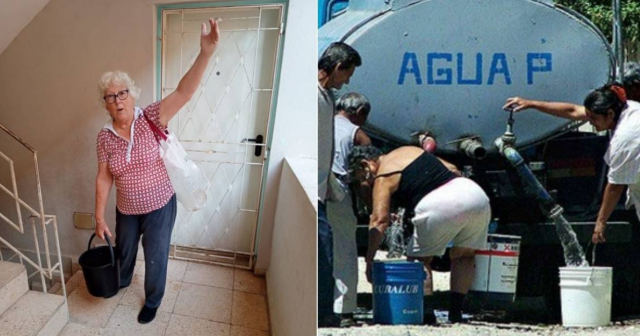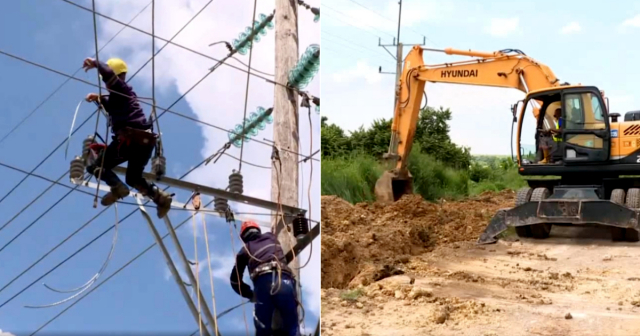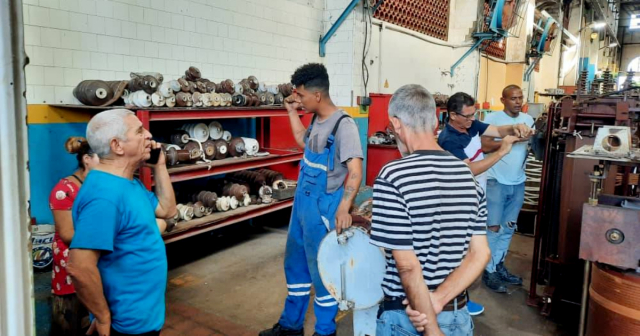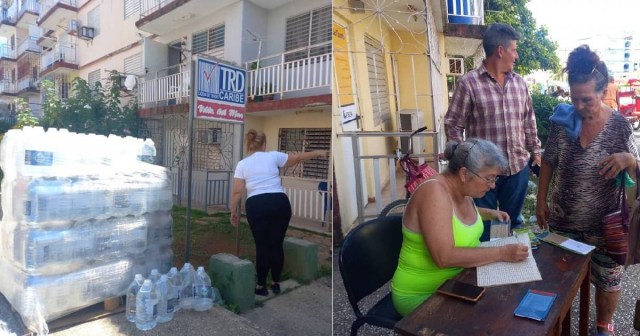
The crisis with water supply continues to severely affect the population of Santiago de Cuba, despite the investments claimed by local authorities to improve the service.
The main leaders of the territory appeared on the television program "Santiago Hoy" on Tele Turquino, where they boasted about stating that the province is second nationwide in investments in the sector, according to the state newspaper Sierra Maestra.
However, the people of Santiago face long distribution cycles, system failures, and a lack of adequate infrastructure that has exacerbated the situation in recent months.
The government justified its inability with the constant breakdowns in the supply networks, the depleted water sources, and the energy contingency in Santiago de Cuba, which limits the operation of the pumping stations.
Furthermore, the issue of prolonged supply cycles is a reality for many localities in the province, where in some cases the water supply can take up to 60 days, as happens in the municipality of San Luis.
In areas like Palma Soriano, the population faces significant delays in the rehabilitation of their aqueduct system, with distribution cycles that can extend up to 17 days.
In Contramaestre, although the supply has improved for about 15,000 consumers, some areas still face outages of up to 24 days.
In the municipality of Songo-La Maya, for example, breaks in the system have caused some areas to receive water with cycles of up to 22 days, while new equipment is being installed to improve the service.
On the other hand, only 26 of the 45 available tank trucks are operational, which affects the distribution in the 128 communities that do not have hydraulic networks, according to the cited news portal.
This problem, combined with the fuel shortage, has further complicated access to water for about 44,000 people who depend on this service.
Despite this critical situation, the authorities highlight the investments being made in the province, such as the rehabilitation of networks, the construction of new pipelines, and the change of the energy matrix in the pumping stations, through the installation of solar panels in 70 of the 105 existing stations.
Provincial authorities, led by Beatriz Johnson Urrutia and Manuel Falcón Hernández, have been supervising the work in various areas, but the population continues to report a lack of definitive solutions.
In addition, the leaders have urged the population to report any irregularities, such as the illegal sale of water, a problem that, according to the authorities, must be controlled to prevent the abuse of available resources.
Currently, about 700,000 people in Cuba do not receive water daily due to blackouts, as the hydraulic sector is the second largest consumer of electricity after the demand from the population, according to official sources.
Antonio Rodríguez Rodríguez, president of the National Institute of Hydraulic Resources, described the distribution of drinking water today as "a very complex situation," pointing out the ongoing power outages, which he referred to as "energy contingency," as the cause, reported the official newspaper Granma.
What do you think?
COMMENTFiled under:






